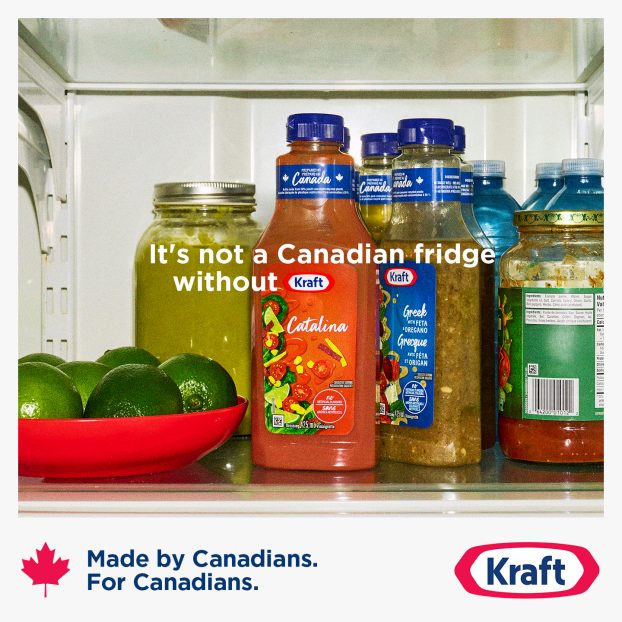Awards:
• Best use of newspaper (tie)
• Best plan for a budget of more than $1 million (runner-up)
Agency/media company: MindShare Canada
Client: Unilever Canada
Brand: Dove bar
Media team: Tim Hughes, client business director, Louise Finn, media planner, Katie Pearman, media planner
Media budget: $1.3 million
Media used: Newspaper, out-of-home, in-store, magazine
Timing: October to December 2000
THE BACKGROUND
In 1998, Unilever hired a research firm to determine Dove’s strength with dermatologists. The results showed that 87% recommended Dove for mildness, while only 13% recommended Ivory (Dove’s closest competitor). Since Ivory’s advertising message has always been about being mild on your skin, this was a significant finding.
Research in hand, a strategy was drawn up to communicate the message and convince as many Ivory and other bar users to switch to Dove as possible. It was decided that a 360-degree message encompassing multi-media, in-store, sampling, co-op activity and PR was the way to go. Bar soap is a television-dominated category, so MindShare wanted to complement its current TV plan, which targets core Dove users, with non-television media. The idea was to achieve high levels of reach and frequency and create a big impact by treating what are traditionally thought of as secondary media vehicles as primary media vehicles. Along the way, MindShare hoped to get some national (English and French) media coverage, with emphasis on the major markets.
To keep the buy targeted, proprietary PMB data was used to understand the media habits and usage patterns of competitive bar users (Ivory in particular) who would be most receptive to the new Dove findings.
THE PLAN
A total of nine different executions were created to fit the seven recommended media vehicles. Each execution related directly to each medium. Media were selected based on their ability to communicate the impressive research results. The creative was tailored to the media and the media were tailored to the creative.
Newspaper
The newspaper plan ran in local papers in 19 markets as well as in the two national papers. It included four components: A sample insert, front-page Post-its, an icicle print ad and a banner ad.
The sample insert was a sturdy L-shaped piece, designed to look like the bars of a graph, with a sample of the product glued to the corner. This piece was distributed in the Toronto Star, using a proprietary research tool to target distribution to dense clusters of Ivory users.
Post-it Notes were designed to look like prescription notes from a doctor. They ran on the front page of major dailies in Toronto, Vancouver and Montreal. The simplicity of the white note against the newsprint was very effective – 20% of readers surveyed recalled the ad one week after distribution.
The icicles on-page execution used the harsh Canadian winter weather to reinforce the Dove mildness message, using the icicles as the bars of the graph. The ad ran on the weather page to tie in with the weather map and forecast.
The banner was the sustaining print execution, sporting the tag: ‘If any more dermatologists recommended Dove for mildness, we’d have to buy another page.’ The ad ran in full-colour (to create impact) and black-and-white (to extend duration). The banners were launched on the front page of the Lifestyle section, and maintained this position where possible.
Subway
The subway out-of-home component made full use of the available ad placements in each venue, even though this required a different execution in Toronto from the one used in Montreal and Vancouver.
MindShare used a ‘sunroof’ format in Toronto, which involved extending the bar graph on a door card by continuing it on a horizontal card directly above it – suggesting that if the Dove bar went any higher, the ad would need a sunroof. As well, a ‘next car’ ad at the end of each car told readers that if any more dermatologists recommended Dove, the bar graph would extend into the adjacent subway car.
Due to the special positioning requirements of both executions, MindShare had to work very closely with the Toronto Transit Commission. The agency was able to create ad dominance in each train, ensuring that subway riders would see the ads from anywhere in the car.
MindShare couldn’t use the Toronto subway executions in Vancouver and Montreal, but transit use is still strong in those markets, so the agency felt that a platform poster execution could work well. The ads used a flat paper creative with a high-impact 3-D effect to look like the bar graph was scrunched up because it did not have enough room to fit in the poster frame. The tag read: ‘Due to space constraints, crushing defeat not shown actual size.’
In-Store
Large floor stickers and shelf talkers were used in the soap and skin care aisles to reach consumers in-store across Canada. The floor graphics tag read: ‘This is where 87% of dermatologists stand on mildness.’ The shelf talker looked like a doctor’s prescription pad and displayed a handwritten-style note that said: ‘87% of dermatologists recommend Dove for mildness.’ Sales volume increased by 31.5% when both items were used and 14.7% where only floor graphics were used.
Transit shelter and street MindShare planned transit shelter and street ads in Toronto, Montreal and Vancouver, locating the posters in areas with high pedestrian traffic and close to points of purchase. The scrunched bar graph creative (same as the platform posters) was used.
Mall posters
Mall posters were planned in eight of Canada’s top markets from coast to coast (accounting for 46% of the population). To maximize sales impact, MindShare negotiated many locations outside of drugstores, grocery stores, and mass merchandisers. The creative was the same as the transit shelter and platform ads.
Magazines
MindShare used magazines to augment national coverage in English Canada. Time and Maclean’s were selected because of their reach and news environment, and TV Guide was selected for extended national coverage and frequency (TV Guide is referred to several times a week by its readers). The agency negotiated franchise positions, such as opposite health-related editorial, to showcase the creative.
THE RESULTS
The collaboration between client, media, creative, production and account services produced a high-impact campaign. Unaided brand awareness increased to 65% (from 41%). Dove sales continue to soar, surpassing Ivory sales, and Dove share in Canada is higher than any other country in the world. Unilever was extremely pleased with the seamless execution of the multi-media campaign.























